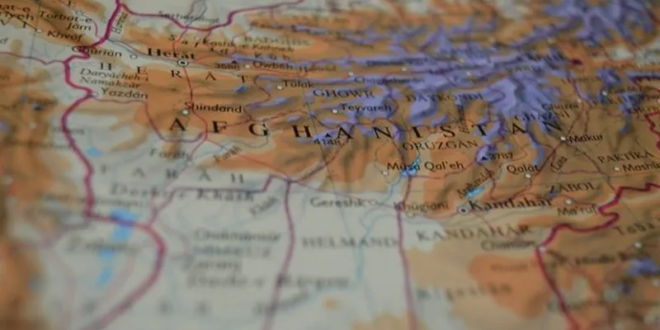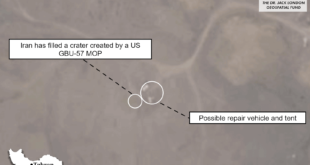In light of the second anniversary of the Taliban’s seizure of Afghanistan on August 15th, the global focus has transitioned towards the evolving terrorism scenario in the area. The post-Kabul era has prompted apprehensions regarding the regional security and stability implications.
Over the span of two years following the capital’s capture, a multifaceted narrative has unfolded, characterized by the resurgence of extremist factions, widespread violations of human rights, and intricate geopolitical complexities intertwined with Afghanistan’s de facto governing authorities.
President Biden’s Claims About Al-Qaeda and Taliban Collaboration
President Biden’s assertion that Al-Qaeda no longer resides in Afghanistan and that the Taliban is collaborating with the US to combat terrorism is at odds with the apparent reality on the ground. This stance was reiterated by US diplomats after their initial formal interaction with Taliban delegates in July. While the US State Department acknowledged a reduction in major attacks within Afghanistan, endorsing the Taliban’s anti-terrorism endeavors might be neglecting more extensive cross-border security challenges.
The U.S. withdrawal from Afghanistan in 2021 marked a pivotal shift in global geopolitics. With the Taliban’s unexpected yet rapid return to power, the international community watched with bated breath, concerned about Afghanistan’s reemergence as a potential nexus for international terrorism. This transition has profound implications, not only for Afghanistan’s internal sociopolitical dynamics but also for the larger regional security matrix.
In this uncertain scenario, the perception of security in Afghanistan has become a critical focal point. The balance between the Taliban’s assurances of stability and the lingering fears of a resurgence in terror activities has created a complex web of narratives. While some may argue that the Taliban’s control could curb certain extremist elements, others remain skeptical given historical precedents.
The shifting terror threats in Afghanistan present a multifaceted challenge for policymakers and analysts alike. Deciphering the true motivations and capabilities of various terrorist groups, understanding the geopolitical interests of neighboring nations, and discerning the extent of the Taliban’s control are all essential for an accurate assessment of the security landscape. As Afghanistan navigates this intricate terrain, global stakeholders must grapple with difficult questions. Will the Taliban be a reliable partner against terrorism, or will their historical associations eventually resurface? Can Afghanistan achieve a semblance of stability without completely eradicating extremist elements?
These questions underscore the complexities of the security situation and the delicate balance between optimism and caution. The resurgence of terrorism in Afghanistan and the evolving nature of security threats have created a volatile and uncertain environment. The interplay between the Taliban’s assurances, global perceptions, and the actual realities on the ground will shape the trajectory of Afghanistan’s security landscape in the years to come. The world watches as the nation strives to find a delicate equilibrium between stability and the ever-present specter of terrorism.
Crisis And Concealment: Illusions of Security in Afghanistan
The Taliban’s recent military victory in Afghanistan has emboldened various militant groups in the region that were previously displaced. This success has granted these groups unprecedented freedom to move across the region without consequences. According to the UN Sanctions Monitoring Team, Al-Qaeda remains active in Afghanistan, maintaining an estimated strength of around 2,000 fighters while keeping a low profile.
Surprisingly, the Taliban has integrated Al-Qaeda members into key administrative and military roles, signaling their alignment. Two notable Al-Qaeda veterans, Qari Esanhanullah and Agha Hakeem, have been appointed as governors in crucial eastern provinces. Another concerning development is the promotion of Tajmir Jawad Hafizallah, now Deputy Chief of the Taliban’s Intelligence wing, “General Directorate of Intelligence”.
Of particular concern is the Kabul Attack Network, which comprises fighters from the Taliban, the Haqqani Network, and Hizb-i-Islami Gulbuddin, and collaborates with terrorist groups like Lashkar-e-Taiba and Al-Qaeda. This network pools the resources of these groups to conduct attacks within and around Kabul. Afghan intelligence officials have linked the Kabul Attack Network to Pakistan’s Inter-Services Intelligence directorate, further complicating the security landscape.
Operating significantly across the eastern and northeastern provinces of Afghanistan, the Afghan branch of the Islamic State (ISKP) was established in 2015. The group is recognized for orchestrating large-scale, intricate attacks primarily within urban areas. Their targets encompass a broad spectrum, ranging from religious and ethnic minority groups to high-ranking Taliban officials. Illustrating the extent of ISKP’s operations, an attack occurred during a funeral service for a senior Taliban leader in Badakhshan province. This incident resulted in a substantial toll, with over 30 casualties, including the demise of a provincial police chief. This event underscores ISKP’s audacity in carrying out attacks, even when faced with the presence of the Taliban.
In addition to countering ISKP, the Taliban is met with opposition from internal resistance forces active within Afghanistan. Prominent among these groups are the National Resistance Force and the Afghanistan Freedom Front. These entities have recently heightened their operational undertakings. The central objective of these resistance groups revolves around targeting the Taliban’s military infrastructure and eliminating senior commanders within the Taliban’s hierarchy. Their endeavors are strategically aimed at eroding the Taliban’s grip on power and reducing their capacity to govern the nation effectively.
While these resistance groups might lack the comprehensive operational capabilities to pose an existential threat to the Taliban regime, their actions consistently challenge the image that the Taliban seeks to project of a harmonious and uncontested Afghanistan. These groups actively dispute the narrative that the Taliban has sole control and that the nation exists under their rule in a state of stability. In addition, Afghanistan’s intricate security landscape, where a variety of militant groups, including ISKP and internal resistance forces, confront the authority of the Taliban and undermine their narrative of control and stability.
The Intricate Nature of Evolving Terror Threats
The destabilization of Afghanistan has the potential to extend beyond its borders, emerging as a hotbed for global terrorism with repercussions reaching distant nations. Reports from sources like the Global Terrorism Index underscore the undeniable spread of terrorism internationally, heightening concerns about Afghanistan evolving into a hub for such activities.
Given the right conditions, transnational terror networks might view Afghanistan as an ideal operational base, encompassing training, indoctrination, and strategic planning. Addressing this challenge necessitates a united global effort. The international community must engage with the Taliban to push for explicit commitments against supporting international terrorism. Neighboring countries should enhance intelligence sharing, conduct joint military exercises, and bolster border security to counter the potential overflow of terrorism. Ensuring Afghanistan’s economic stability is paramount, as a struggling economy could exacerbate extremism. Tackling the humanitarian crisis is equally critical, as desperation could fuel radicalization.
An informed population is foundational for any democracy. Encouraging impartial journalism and cultivating a free media landscape can counter extremist ideologies. In the modern era, internet access is vital, and strengthening digital infrastructure while providing widespread internet connectivity can expose many Afghans to the world, countering isolationist narratives. However, alongside digital connectivity comes the risk of cyberterrorism. Fortifying Afghanistan’s cybersecurity framework is crucial to deter digital extremist activities.
Impact on Internal Socio-Political Dynamics and Regional Security
In the aftermath of Kabul’s fall, Pakistan has witnessed a notable uptick in attacks, predominantly attributed to the Tehreek-e-Taliban Pakistan (TTP), an offshoot of the Taliban. The TTP’s operational prowess has undergone significant growth. They have established fresh support bases and extended the scope of their attacks beyond their traditional strongholds.
Significantly, the TTP has successfully brought together over 35 fragmented groups, enabling them to diversify their targets and rapidly escalate their activities. Despite the Taliban’s disavowal of sheltering terrorists, substantial evidence indicates their sway over the TTP. This includes aiding TTP leaders in crossing borders and other supportive actions. Mysterious circumstances have led to the deaths of numerous senior TTP commanders within Afghanistan. The TTP’s presence in Afghanistan suggests links to the Taliban and echoes the Taliban’s own reorganization post their success in Kabul.
Concurrently, the Afghan Islamic State affiliate, ISKP, has redirected its attention towards Pakistan. This shift is evident in attacks like the Bajaur district suicide bombing, which caused significant casualties. Across Central and South Asia, transnational terrorist groups are undergoing analogous reorganization and revitalization efforts. A UN report uncovers that the East Turkestan Islamic Movement, aspiring to control China’s Xinjiang province, has established bases in northern and northeastern Afghanistan. Reports suggest the Taliban has facilitated the movement of Uighur militants from China’s border areas to Afghan provinces for training, implying renewed alliances with Al-Qaeda-affiliated entities.
The Afghan Taliban has relocated over 200 Tajik militants from the Al-Qaeda-linked Jamaat Ansarullah group to Afghanistan, integrating foreign Tajik fighters into their ranks. The intricate dynamics after Kabul’s fall surge in TTP activities in Pakistan, alleged connections between TTP and the Taliban, ISKP’s shift towards Pakistan, and transnational terror groups’ reorganization underscore the evolving security landscape. Moreover, the Taliban’s role in aiding Uighur and Tajik militants’ movements underscores the intricate relationships between various extremist entities.
Conclusion
The resurgence of the Taliban in Afghanistan and the potential revival of international terrorism pose significant threats to global and regional stability. To counter these risks, a collaborative and proactive strategy is essential, aiming to prevent the repetition of historical events. The involvement of the international community, regional actors, and the Afghan people is crucial to chart a course towards peace, development, and prosperity in Afghanistan.
Despite the challenges, determined efforts can neutralize the looming terrorism threat, fostering a more optimistic future for Afghanistan and its neighboring nations. Acknowledging the potential for cross-border actions from Pakistan, the U.S. should demonstrate commitment to aiding Islamabad in the effective management of such operations. This strategic approach could pressure the Taliban to reconsider its affiliations, including groups like the Tehreek-e-Taliban Pakistan (TTP), and potentially reevaluate its ties with Al-Qaeda. Before entering direct negotiations, solid evidence of the Taliban’s genuine commitment to specific conditions is vital. This approach not only establishes the groundwork for meaningful dialogues but also opens pathways for the formation of an inclusive government and the reopening of women’s higher education institutions in Afghanistan.
 Eurasia Press & News
Eurasia Press & News




